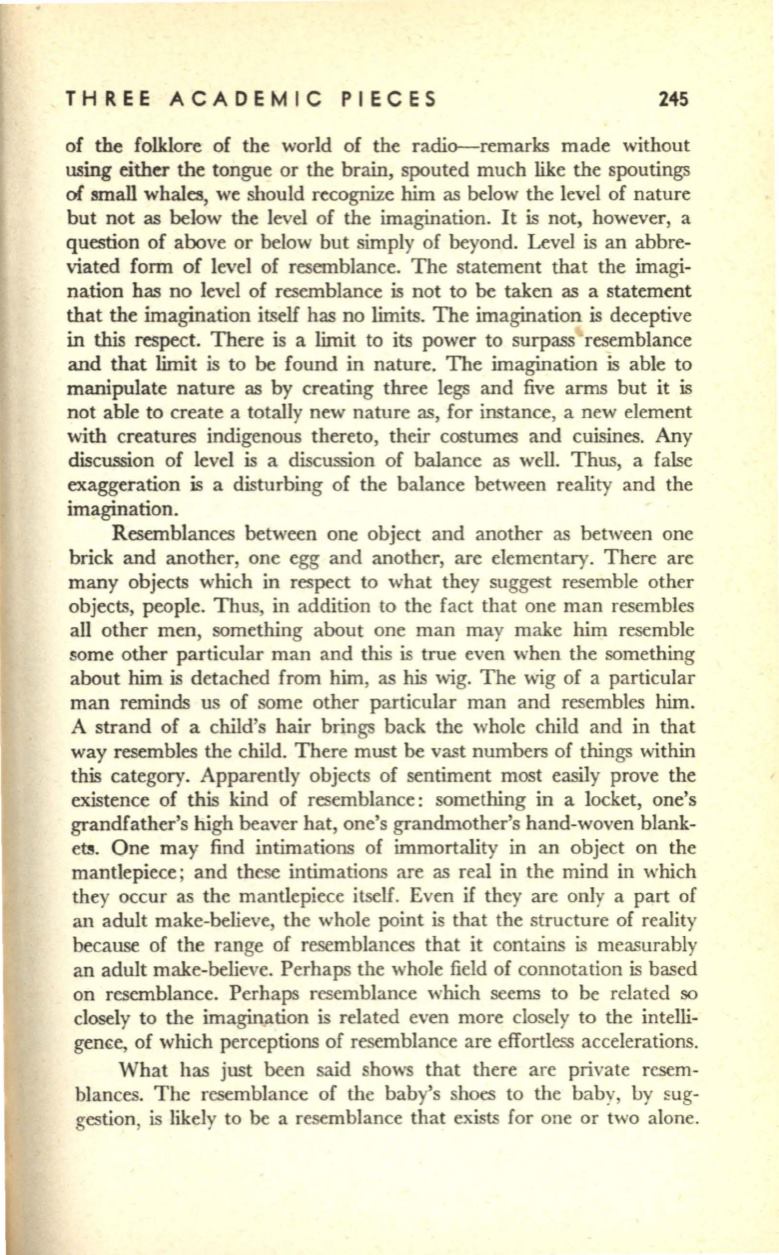
THREE ACADEMIC PIECES
245
of the folklore of the world of the radio-remarks made without
using either the tongue or the brain, spouted much like the spoutings
of
small whales, we should recognize him as below the level of nature
but not as below the level of the imagination. It is not, however, a
question of above or below but simply of beyond. Level is an abbre–
viated form of level of resemblance. The statement that the imagi–
nation has no level of resemblance is not to be taken as a statement
that the imagination itself has no limits. The imagination is deceptive
in this respect. There is a limit to its power to surpass resemblance
and that limit is to be found in nature. The imagination is able to
manipulate nature as by creating three legs and five arms but it is
not able to create a totally new nature as, for instance, a new element
with creatures indigenous thereto, their costumes and cuisines. Any
discussion of level is a discussion of balance as well. Thus, a false
exaggeration is a disturbing of the balance between reality and the
imagination.
Resemblances between one object and another as between one
brick and another, one egg and another, are elementary. There are
many objects which in respect to what they suggest resemble other
objects, people. Thus, in addition to the fact that one man resembles
all other men, something about one man may make him resemble
some other particular man and this is true even when the something
about him is detached from him, as his wig. The wig of a particular
man reminds us of some other particular man and resembles him.
A strand of a child's hair brings back the whole child and in that
way resembles the child. There must be vast numbers of things within
this category. Apparently objects of sentiment most easily prove the
existence of this kind of resemblance: something in a locket, one's
grandfather's high beaver hat, one's grandmother's hand-woven blank–
et!. One may find intimations of immortality in an object on the
mantlepiece; and these intimations are as real in the mind in which
they occur as the mantlepiece itself. Even if they are only a part of
an adult make-believe, the whole point is that the structure of reality
because of the range of resemblances that it contains is measurably
an adult make-believe. Perhaps the whole field of connotation is based
on resemblance. Perhaps resemblance which seems to be related so
closely to the imagirtation is related even more closely to the intelli–
gen<>e, of which perceptions of resemblance are effortless accelerations.
What has just been said shows that there are private resem–
blances. The resemblance of the baby's shoes to the baby, by sug–
gestion, is likely to be a resemblance that exists for one or two alone.


